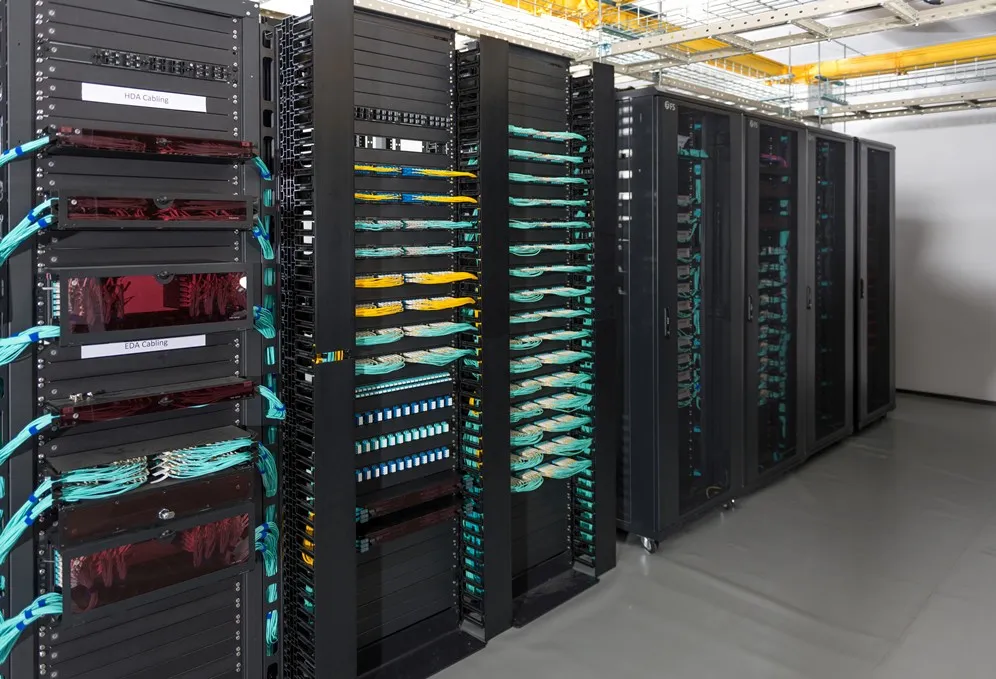Network systems come as the brain and heart of any modern infrastructure (be it a business or enterprise). The most complicated tasks and datum processing are entrusted to artificial intelligence. Thus, IT systems come as an indispensable part of any modern facility.
The number of IT system components may reach several hundred or thousand. Servers, routers, and other active devices take up much space, so the issue of hardware accommodation is topical.
A server rack comes as the most comfortable and assessable option for placing network devices. This type of furniture is beneficial due to the following perks:
- Security: Durable metal bodies secure equipment. Racks can be equipped with side panels and doors to prevent negative external (environmental and human) impacts. Furniture comes as a safe place for equipment storage.
- Ergonomic storage: Multi-layer racks allow for housing lots of devices in a small area. The ability to fasten equipment to rails, vertical supports, and shelves provides wider opportunities for hardware placement. Furniture can support all sorts of network rack components (both devices and accessories).
- Cooling: Open-frame models allow the airflow to freely pass through devices and cool them. Thus, the need to install fans is eliminated.
- Easy troubleshooting: Easy and unhindered access to servers allows the tech staff to troubleshoot the hardware effectively, preventing malfunction and downtime.
Key Components of a Server Rack
The body of each server rack comprises two main parts, namely the basic frame and mounting rails. Note that racks fall into two classes, i.e. floor-standing and wall-mount.
Depending on the type of furniture, some construction features are found. For instance, floor-standing models are bigger and equipped with casters for easier relocation.
Wall-mount pieces are smaller since their support capacity is limited; their bodies are equipped with special dowels and fasteners for attaching to vertical surfaces.
When dealing with racks, there are two options for attaching devices. Servers and other active communication hardware can be attached directly to vertical uprights or mounting rails. Rails are used to support heavier devices, while lighter network cabinet components are attached to posts with brackets.
Besides the main frame, rack bodies can be equipped with the following parts:
- Front Door (closed and open types).
- Rear door
- Side panels
- Top panel
- Base
These server rack parts are attached additionally, so not all furniture pieces have them. Doors are usually perforated to improve cooling. The attachment of these parts allows for improving security issues. Enclosed models are used when racks are located in open spaces, where it is impossible to limit and control access to systems.
Additional Parts of a Server Rack
Now, let’s see what to put in a server rack besides servers. The following server rack parts are widely used, since no IT system can run without them:
- Switches and Routers: These devices are responsible for interruptible and smooth communication of different units of one system or several separated systems. Switches are equipped with multiple plugs to switch different devices and ensure communication between components and units. They help connect devices within one IT system. Routers are designed to set communication between several systems. They allocate traffic and allow for connecting systems over a big distance.
- Patch Panels: These tools come as connecting links that welcome cords and route them further to destination hardware. They have multiple jacks for different types of wires. Patch panels deal with fiber, optic, cat-5, and other types of cables.
- Supporting Accessories: This class of tools includes rails, cords, blanking panels, and cable organizers. In other words, these accessories come as essential parts of a server rack that help improve system accessibility. It is impossible to arrange a neat, well-operating network system without accessories. They help keep in order the system and guarantee equipment neat allocation.
- Rails are used to support heavy devices. Sliding rails are widely used to reach hardware easily and quickly.
- Blanking panels serve to plug in unused holes in rack enclosures. They prevent system pollution since they do not allow debris to enter the rack body. They also stabilize the inner climate by preventing the outside air from disturbing the internal environment.
- Cord Cables stretch through racks to power units, connect different devices, and enable the system to work as a single unit. The number of wires can reach several hundred or thousand. Thus, cable organizers are required to maintain the system easily and effectively. Organizers, ties, hooks, arms, and boxes are used to keep cords in order and prevent tangling.
Besides, quite frequently, system administrators place computers, monitors, keyboards, and other controlling hardware in racks. Fans are usually installed to improve ventilation and force the airflow to move in the right direction.
Here are all the key components of rack server. Lots of devices are required to set up the system and make it perform smoothly and uninterruptedly. Both active devices and accessories are needed to create a high-quality well-functioning system.
Server racks help simplify the issue of hardware accommodation. They provide ergonomic, safe, and durable storage for IT devices. Moreover, constructions are equipped with all the needed slots and fasteners for hardware reliable attachment.
Sysracks sets itself apart as a leading manufacturer of top-notch server equipment and a trusted supplier of server rack parts. With a strong focus on quality, security, and ergonomic design, Sysracks offers a comprehensive range of components and accessories tailored to meet the specific needs of IT professionals.
Their server racks provide a reliable solution for hardware accommodation, ensuring the seamless operation of network systems. By partnering with Sysracks, businesses can rely on their expertise to create well-organized and high-performing IT infrastructures that drive efficiency and productivity.

